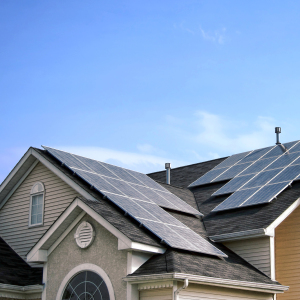Families, particularly those on the brink living paycheck to paycheck, have had an especially difficult time since the Great Recession. Always just one sick child or accident away from falling below the poverty line, the last thing struggling families need are predatory policies that allow a basic daily need – energy – to be at risk.
This is unfortunately true for many families living at or below the poverty line who are being targeted by certain energy companies in a way that will jeopardize their utility prices and availability.
Most Americans support measures to promote cleaner energy such as solar or wind power. In order to stimulate the use of these forms of energy, the federal government—and often state and local governments as well—subsidize their use. In the case of solar energy, homeowners are given subsidies to purchase and install solar panels on their roofs to supplement or offset their own energy use.
While these subsidies do encourage placement of solar panels, there are greater costs most bureaucrats do not consider: who is ultimately footing the bill? In this case, the money used to help pay for the solar panels comes from taxes and electricity rates paid by all – including low-income residents.
The question is not whether the use of solar power is a good or bad thing but who is ultimately paying and benefiting from them. Statistics show that utilities make up about 14 percent of a low-income family’s budget, compared to 3-4 percent for a middle class family.
Those living in or near poverty are unlikely to qualify for solar subsidies since many of them do not own their own homes. In general, policies targeting “homeowners” do nothing for renters, and in fact can take away funding that normally would be used to address their needs, be it direct financial assistance, rate relief, or vouchers.
It could be argued that solar subsidies would be more utile if the benefits flowed through all communities. However, as they are currently structured, the only people who gain are those who install the panels and receive the subsidy.
Many of those living on the edge of poverty are focused keeping their families clothed, fed, and keeping the lights on. Every dollar has a purpose. Their tax dollars should not be sent upward to improve the comforts of those who can already afford homes amenable to panels or take for granted that their heating or central air will be on in the morning.
Further, even if those of modest means owned a home, many of them could not afford to buy, modify and install solar panels, even with generous subsidies.
A new business model has also been borne from these generous solar subsidies. Solar leasing companies encourage consumers to sign a long-term lease – often 20 years – to install solar panels and then the companies cash in on the homeowners’ federal and local tax subsidies. These companies often “lease” panels at low initial rates, but lock in confused borrowers into long-term deals with escalating lease payments.
Consumer advocates across the country strongly oppose both corporate welfare and the upward distribution of income. Programs designed for a broader demographic, such as large scale solar projects or setting overall conservation goals for a community, would better ensure that benefits get distributed more equally among the population.
In the end, there are better methods of promoting clean energy in homes than giving the upper-middle class subsidies at the expense of those struggling to get by.

